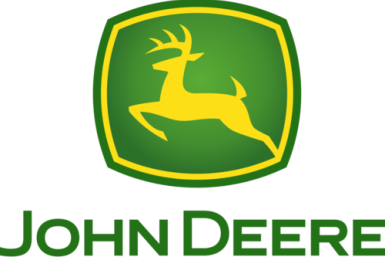
When you think of America’s oldest heavy industry manufacturing brands, the big green machines from John Deere come to mind. What you may not know is how the company is pivoting to be at the center of intelligent agriculture, backed by an impressive data and analytics team spread across the company. Kira Barclay leads analytics for Deere’s finance arm, but has a front row seat on the efforts underway to make Deere the leader when it comes to data and analytics flowing through the tractors and agricultural equipment they build.
Key Takeaways
Describe your title and role.
My title is Director of John Deere Financial (JDF) Analytics. I lead global customer and channel analytics, and that is the continuous innovation and development of both customer and dealer-facing analytic products. I also lead JDF's internal analytics consulting organization. Both of these areas represent a lot of growth and opportunity for the company. I also play a leadership role in analytics talent recruitment, development, and retention for the John Deere enterprise.
Where does the analytics function sit in the organization and who does it report into?
I report through the sales and marketing organization in the JDF business unit, but that may not be the case for other analytics teams at Deere.
Is that the right place for the analytics function to report?
What works for one company, or even one business unit within a company, might be a train wreck somewhere else. It's highly dependent on the company's culture, and where they're at in their analytics journey. In our organization, sales and marketing is a great place for analytics to live. I have been in analytics teams that have reported through different areas of the organization, and what I've found is, if you take your org structure as a given, you can build an operating model that will work with most any structure.
Describe the organizing model you have adopted for analytics.
Analytics leadership across the enterprise at John Deere comes together on our analytics leadership team. We're a decentralized function within John Deere. There are 10 to 12 analytics teams of scale within the organization. The analytics leadership team provides cohesive leadership on foundational items that are common across our teams. These would be things like talent, culture, and technology. The team that I oversee is just north of 40 people, and that would be data scientists and data wranglers. We also have a role called data and analytics catalyst that helps us focus on where the best business opportunities are. Within the broader John Deere organization, we have about 200 dedicated positions in this function. We also have many more positions that do analytical type work.
What are four or five important qualities and behaviors of analytics leaders?
- Empathy. Regardless of our function, we lead a group of humans, and human beings are complex creatures. In an area where we need to drive change in the organization, empathy becomes even more important.
- Drive change. It requires fortitude to say, we've got to look at this differently and we've got to think about this differently. And so, being inspirational and a little provocative to drive and lead change in the organization.
- Influence. As analytics leaders, we don't own the final decision for the business decisions that we're supporting, but we do have the ability to influence those decisions and how folks are looking at and understanding data.
- Business understanding. Most of us have spent time in a variety of areas within the business, maybe in quantitative roles, maybe not, but we understand the business. We understand our customers. We understand our dealers. We understand the markets in which we operate. This is important for producing valuable analytics and maintaining credibility with business leaders.
- Background in quantitative methods. The best analytics leaders either started in that space or have some sort of background in their education or experience. Even if we don't know the same tools and technologies and practices that data scientists do today, we understand the processes and the ways of thinking. We can keep up with them.
How do you measure performance and success when it comes to analytics?
We look at business value, first and foremost, and we look at that in two different ways. In the customer-channel side, we measure success based on incremental equipment sales, incremental finance volume, and customer engagement or customer satisfaction. When we talk about business value for our internal analytics consulting organization, we're thinking about how we can help our business be more efficient and effective. Our measures there might be related to internal operating efficiency. A second measure of performance is stakeholder satisfaction. We have internal stakeholders, especially our analytics consulting group. They don't own their analytics resources. Those resources are centralized on my team for the JDF business unit. We always want to ensure that those stakeholders are getting what they need when they need it. The third thing that we look at from a performance standpoint is capability enhancement. When we're taking on projects and prioritizing opportunities, we always ask ourselves the question, does this help us advance a capability that we know we need to advance?
For more insights from Kira, listen to the full podcast.